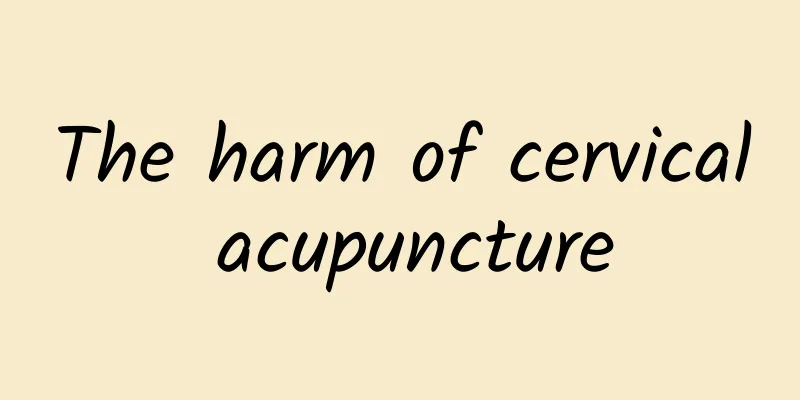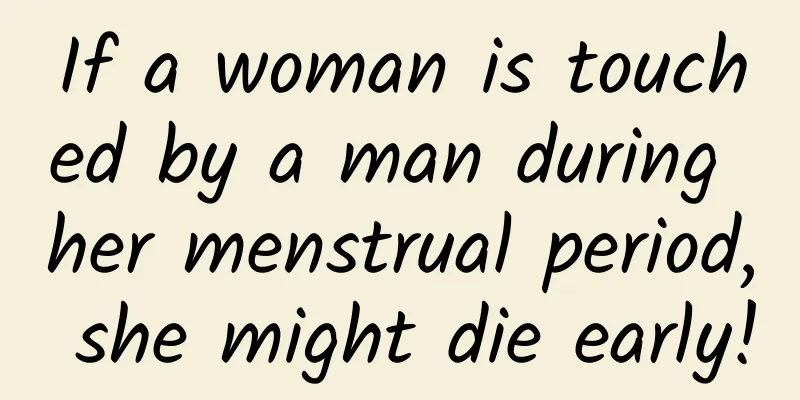The harm of cervical acupuncture

|
Nowadays, many people have some symptoms of cervical spondylosis to varying degrees. This has a lot to do with our daily habits. For some friends who suffer from severe cervical spondylosis, treatment is necessary. In order to recover faster, some patients choose to undergo acupuncture treatment. Although acupuncture has a certain effect on cervical spondylosis, it also has some hazards. The harms of cervical acupuncture are as follows. The micro-acupuncture knife does have a certain effect on cervical spondylosis. It can relieve neck muscle spasms, and relieve neck pain and soreness. However, the specific effect varies from person to person. Because there are many different types of cervical spondylosis, the treatment methods for different types of cervical spondylosis are different. Nerve root type cervical spondylosis can be treated with the micro-acupuncture knife. For other types of cervical spondylosis, acupuncture is not very effective. If it is vertebral artery type cervical spondylosis, you can take flunarizine for treatment. If it is sympathetic cervical spondylosis, you can take nerve nourishing drugs and Chinese patent medicine for conditioning. In addition, moving the neck more often, doing hot compresses on the neck, massaging with a heat lamp and applying external plasters can also help improve symptoms. Surgical operation: The patient is in prone position, fixed point, disinfection and anesthesia are ideal, and the operator uses a No. 4 needle knife to perform soft tissue release at the above-mentioned treatment site. When performing a needle knife surgery between the C5-6 spinous processes, the patient complained of swelling and pain in the neck and an electric shock-like sensation in the right upper limb. The surgeon immediately raised the needle knife, observed for a moment and found no abnormalities, and continued the surgery. After the needle was removed, the patient was sent back to the ward after routine reduction surgery on the operating table. At 13:00 p.m., the patient walked into the ward on his own and lay in bed for about 5 minutes. He suddenly felt a swelling and pain in his neck. The patient complained: "There was a hot current flowing downwards in the cervical spine, and the pain was severe, followed by numbness and weakness in both upper limbs", and then he became irritable and restless. Considered at that time: 1. The patient is extremely sensitive to pain, which causes high blood pressure; 2. There is a small amount of bleeding in the spinal canal. Immediately give intramuscular injection of 10 mg of diazepam, 5 mg of anloxin, 1 mg of reserpine, 50 mg of pethidine and intravenous injection of 10 ml of 25% magnesium sulfate, intravenous hemostatics and dexamethasone to stop bleeding, lower blood pressure and relieve pain. After applying hibernation medicine at 14:00, the patient fell asleep. At 16:00 in the afternoon, the blood pressure was 90/60 mmHg, the breathing was 22 times/min, the heart rate was 80 times/min, the patient was conscious and spoke fluently, the skin sensation of both upper limbs was poor, the patient was obviously weak, the muscle strength was grade III, and the muscle strength of both lower limbs was grade II. Below T4, pain sensation disappears, physiological reflexes disappear, and no pathological signs are elicited. At 16:45, he was sent to another hospital for MRI examination. Body MRI: within the spinal canal from the upper edge of the 4th cervical vertebra to the upper edge of the 6th thoracic vertebra. A first-class T1 and long T2 signal prismatic continuous lesion was seen behind the spinal cord. The spinal cord was compressed and moved forward in front of the lesion. The signal inside the lesion was relatively uniform, with a maximum transverse diameter of 1.8×0.8 cm. Impression: Epidural hematoma in the posterior wall of the C4-T6 spinal canal. After the acupuncture knife surgery on the neck, the patient had severe pain in the neck radiating to the back, and motor and sensory disorders in the trunk and limbs. Physical examination showed: sensory level, superficial sensation below chest 3 in the trunk disappeared, and muscle strength of both lower limbs was level 0; there was no thoracic breathing, but abdominal breathing was present; penile erection and anal reflex were not elicited; the muscle strength of both lower limbs was low, and neither physiological reflexes nor pathological reflexes were elicited. Body MRI showed epidural hematoma on the posterior wall of the C4-T6 vertebral canal. The diagnosis of transverse spinal cord injury was clear and the patient's condition was critical. Acute epidural hematoma. Causes spinal cord compression. If there is a transverse spinal cord injury and surgery is indicated, the only treatment method is to open the vertebra to remove the hematoma and relieve the compression. However, the patient's spinal cord has been compressed for 6 hours and he is now completely paralyzed. Even if the hematoma is removed and the compression is relieved, it is likely that the spinal cord function will be difficult to recover. If surgery is not performed, the edema of the compressed spinal cord segment may spread upward, affecting the higher spinal cord and causing breathing difficulties. Active surgery should be given to save the patient's life. The patient was admitted to the Department of Neurosurgery of ×× Hospital with acute intraspinal epidural hematoma and transverse spinal cord injury. Since the onset of the disease, he has suffered from urinary incontinence and has not been able to pass bowels. At around 7 p.m., the patient entered the operating room and underwent a C4-T6 posterior vertebral incision and epidural hematoma evacuation without active bleeding. Postoperative diagnosis: acute epidural hematoma (C4-T6) and transverse spinal cord injury. Postoperative symptoms include quadriplegia, respiratory failure, lung infection, and intestinal paralysis. After the hospital's active treatment, the patient was out of danger. The patient is still in high paraplegia. Analysis of the specific operation of acupuncture knife: When performing acupuncture knife surgery at a point between the C5-6 spinous processes, the needle knife may cause trauma due to the deviation of the insertion direction or excessive insertion. Because the muscles around the spine of patients with ankylosing spondylitis have mostly degenerated or even calcified, they can be loosened and peeled using a needle knife. It is often difficult to find the different feelings of the soft tissues under the hands. In addition, calcified tissue is hard, so greater force is required to loosen it. Without appropriate preventive measures, it is easy to use too much force and cause the needle knife to lose control, suddenly penetrate into the spinal canal and cause injury. Therefore, if there are important organs or nerves deep within the lesion, the needle knife must be used steadily to loosen the vascular tissue, and the depth of acupuncture must be strictly controlled. For example, hold the needle handle with the thumb and index finger, support the needle body with the middle finger and press it against the skin, and adjust the depth of the needle by flexing and extending the middle finger. If the resistance under the needle is large and incision treatment is required, in order to avoid mishandling, keep the hand holding the needle in a fixed position (the middle finger stabilizes the needle body and controls the depth), and stab hard. Even if the needle suddenly falls into the air, mishandling can be effectively avoided because of the protection of the middle finger. In addition, in this case, needle knife was used to treat the C5-6 spinous process space. The patient complained of distending pain under the needle and an electric shock-like sensation spreading to the left upper limb, indicating possible injury to the spinal cord and nerve roots. The surgeon analyzed the situation based on the location of needle insertion, the depth of needle knife insertion, etc. and decided to quickly stop treatment. However, the treatment in this case was only paused for a short while before the operation was continued. After the needle was removed, routine cervical reduction manipulation was performed on the operating table. That is, strong traction and rotation of the cervical vertebrae will further "tear" open the areas loosened by the needle knife. Judging from the subsequent results. Analysis of "epidural hematoma on the posterior wall of the spinal canal" shows that the needle knife must have punctured the arteries and veins in the spinal canal. However, the cervical spinal cord itself is not directly injured. The needle knife continues to cut and loosen the surrounding soft tissue, causing the surrounding tissue to become tense and spasmodic, which can further stimulate the damaged blood vessels and intensify the bleeding. The subsequent cervical spine manipulation is more likely to be an important external cause of further damage to the ruptured blood vessels. If there is an electric shock sensation in the upper limbs, start acupuncture immediately. Let the patient rest and observe closely. The punctured blood vessel will most likely be protected quickly by the elastic force of the blood vessel and stop bleeding automatically without causing greater damage. |
<<: The harm of frequent use of water floss
>>: Can I eat white radish if it turns blue in the middle?
Recommend
There are many small red bumps on the arms
The appearance of small red bumps on the arms is ...
My belly is protruding like I'm pregnant. What's going on?
There are many reasons why women have a protrudin...
The sequelae of hormone treatment for baby eczema
Because the baby's body is not fully develope...
Can Piyanping cure eczema?
Eczema can be said to be one of the more common s...
Tips for treating rhinitis
Rhinitis is a very common disease. People in Nort...
What ointment to use for herpes on hands
We all know that when summer comes, many people s...
Causes of Astigmatism
Astigmatism is mainly a kind of refractive error....
What are the functions of silver fiber?
In recent years, the medical community has begun ...
What is the Chinese medicine prescription for replenishing kidney yang deficiency?
Nowadays people are always looking for ways to re...
What are the symptoms of poor blood circulation?
People with poor blood circulation are usually pr...
Complications of ovariohysterectomy
After the ovarian and hysterectomy surgery, the p...
Efficacy and function of seaweed
Sea lettuce is a traditional Chinese medicinal ma...
What causes dizziness after drinking Astragalus?
Nowadays, taking Astragalus is no longer the same...
Which finger is first affected by rheumatism?
Rheumatism is a common disease. There are many ty...
How to treat thick white tongue coating, diet and daily conditioning methods
I don’t know if you have ever observed your tongu...









